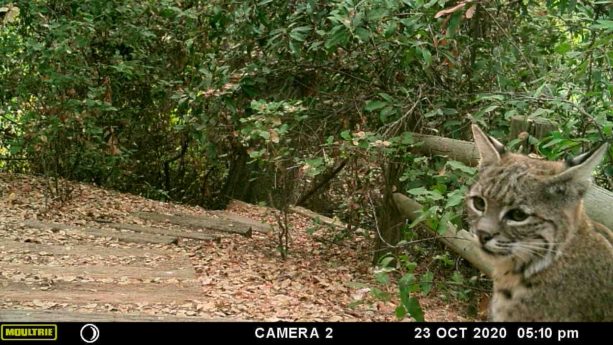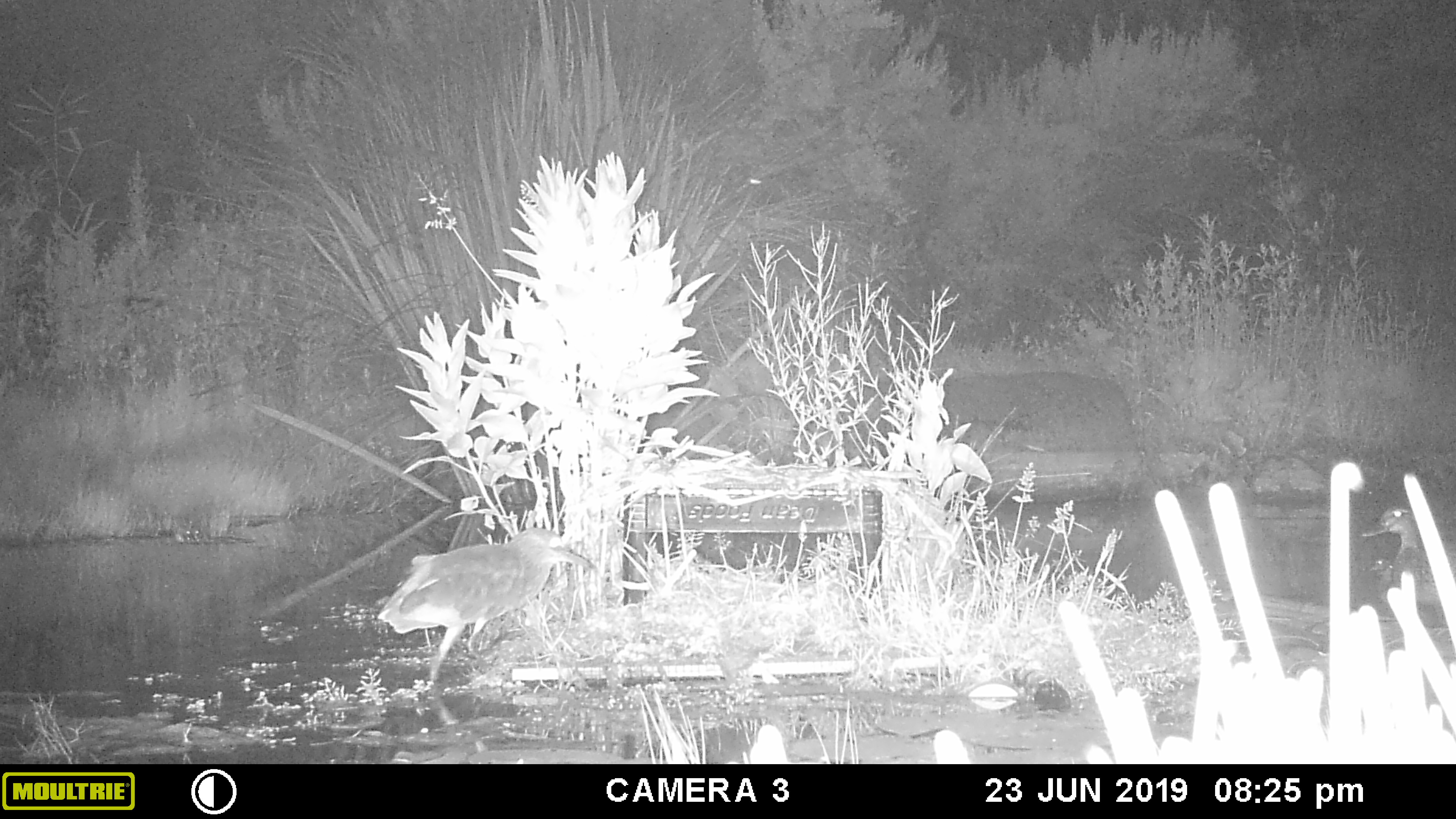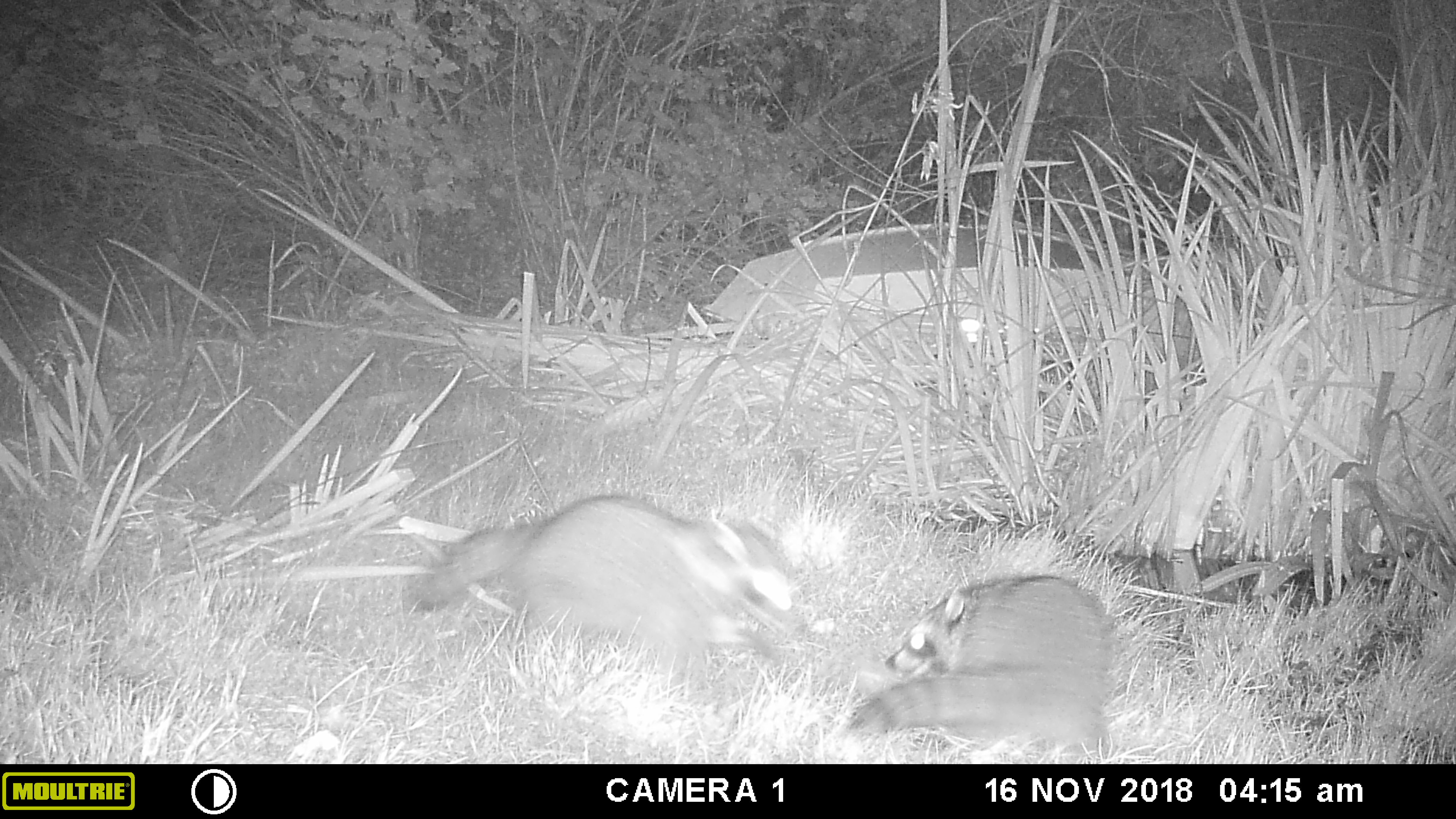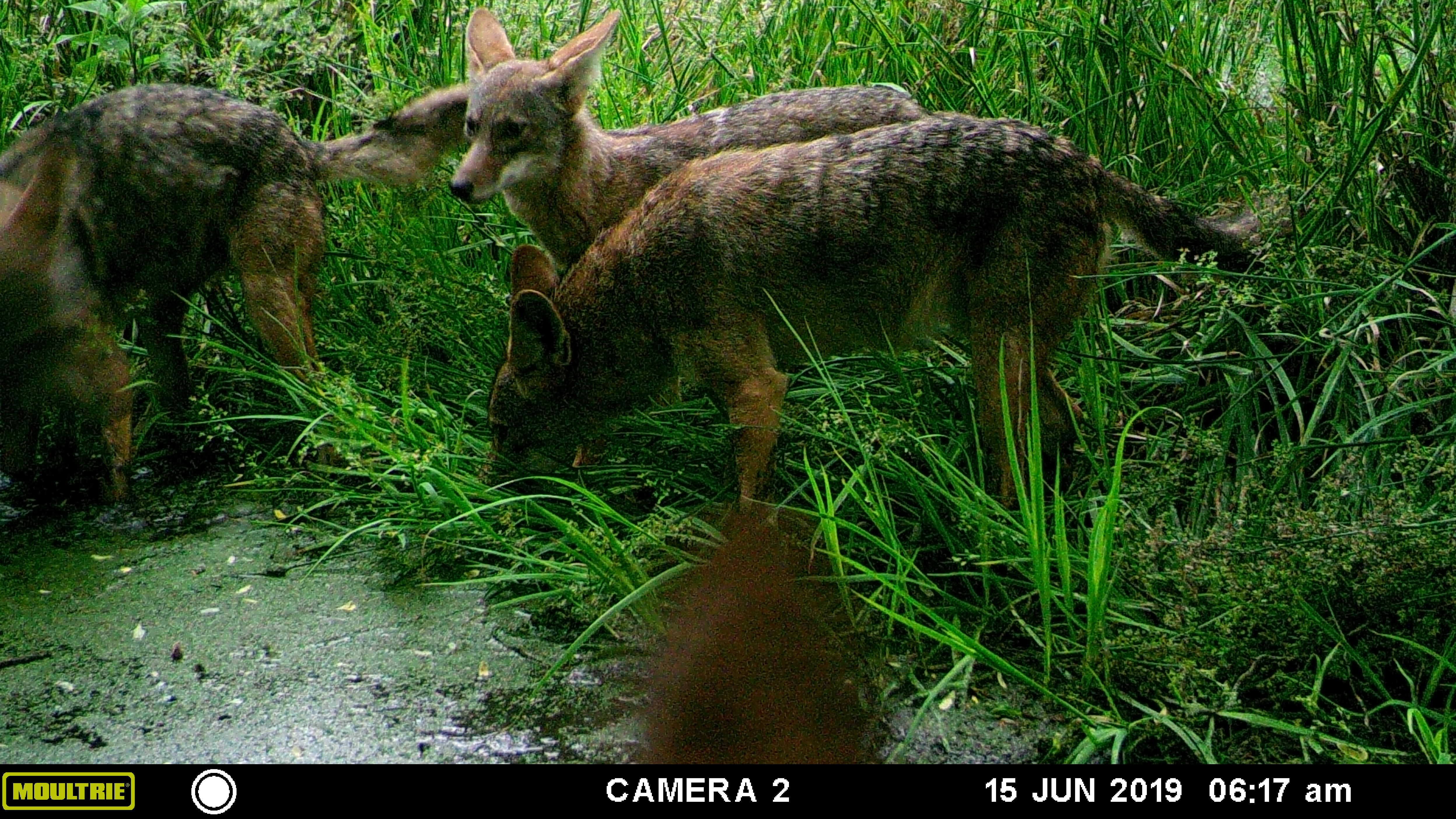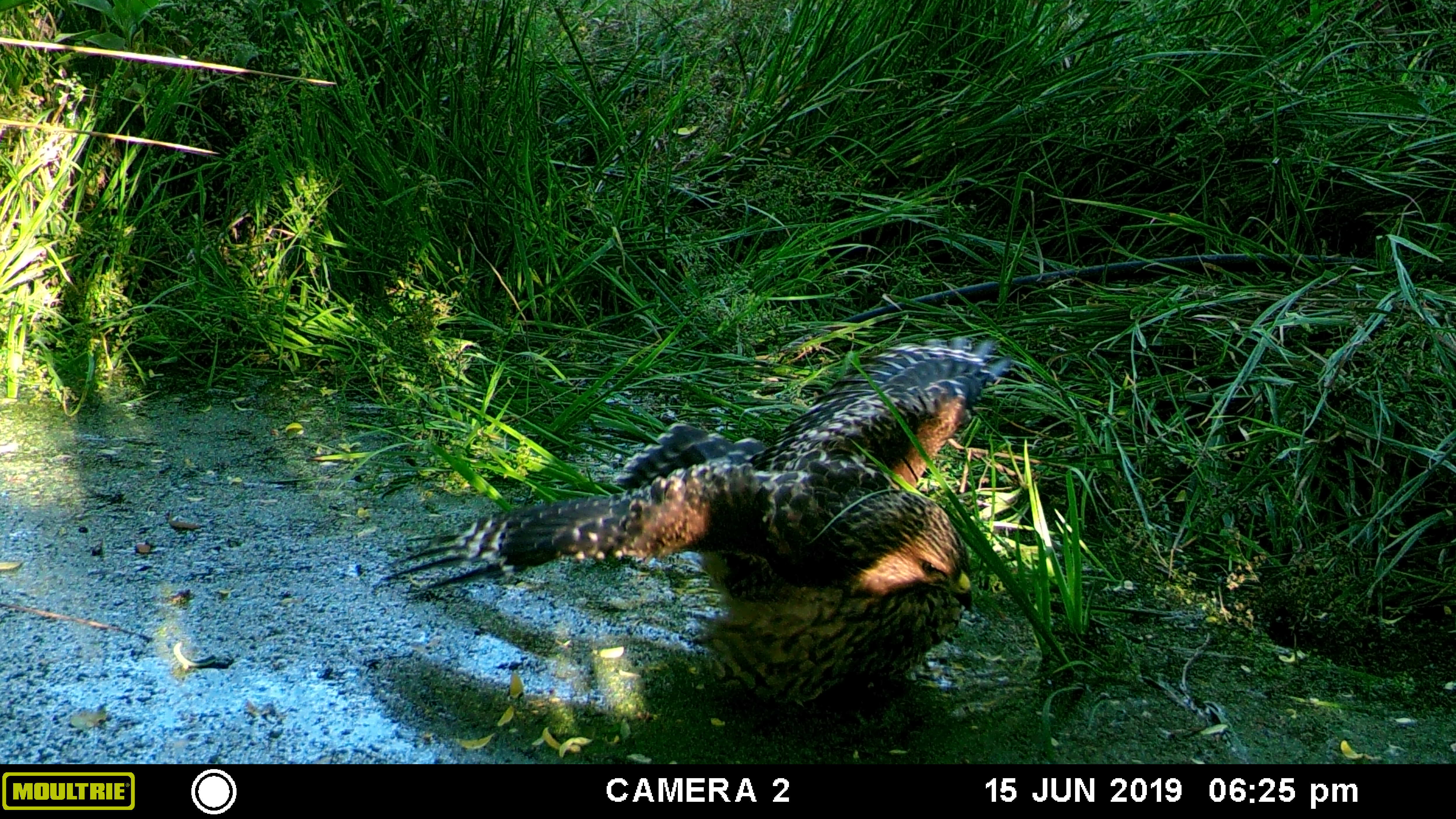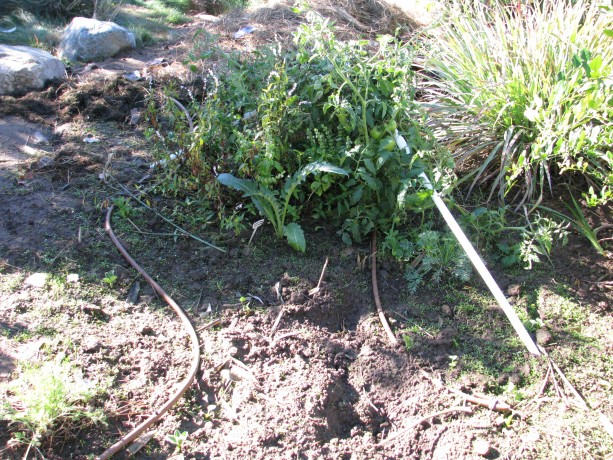-
Mange, Rodenticide and a Bobcat named Daisy
Bobcats are beautiful, shy animals larger than a domestic cat and much smaller than a cougar. Their main food is rabbit, mice, rats and squirrels; given the opportunity they will eat pets and hens if people are careless and unkind enough to allow their pets and hens roam. One bobcat can eat hundreds of rodents a week. They are not aggressive to humans and would rather not encounter anyone, including other bobcats unless it is mating season.
Our property is 1.6 acres, with surrounding lots of similar size and only a couple of miles from town. There is a busy commuter road close by. It is not prime wildlife property. At the bottom of our property there is a seasonal stream where we have encouraged natives to thrive, including an old Coast Live Oak (Quercus agrifolia).
A couple of years ago while watching the short videos from our wildlife camera set up on the stairs leading past the oak and down to the streambed, we cried out in delight when we saw a beautiful bobcat. We named her Petunia. (Time and date signatures on the camera are not accurate, as they reset when batteries go low).
That bobcat gave birth to a little male who delighted us with his kittenish tricks, including sabotaging his mother who puts him in his place. Our palm trunk stairs make great scratching mats. Cats will be cats!
The male, Jonquil, quickly grew up and late last year during bobcat mating season we were delighted to see a young female bobcat. We named her Daisy. Love was in the air. Daisy showed signs of being pregnant in early spring.
We were ecstatic that we were helping to offer habitat to allow these beautiful creatures… who were also helping control the rodents,.. the safety to reproduce. San Diego is one of the most ecologically diverse places in the world. Due to human usage it has been called an epicenter of extinction. Therefore any preserved viable habitat needs to be cherished. Between the years 1970 and 2010 the world lost 52% of its wildlife population across the board, according to a study by the World Wildlife Fund. That figure is now up to 60%. Look at a flock of birds and double it in your mind: that is what should be here. Look at the lizards, the frogs, the seals, the fish, the snakes, the deer…. there should be at least twice as many. The wildlife is disappearing at an alarming rate, and having bobcats reproduce on our property was a miracle.
Then we saw a sign of mange on Daisy and our hope disappeared.
We knew it was all over. Mange is a disfiguring, painful and deadly condition caused by burrowing mites that get under the skin and reproduce. There are several kinds of mites affecting different animals. My mother’s dog had mange and to control it took many long soaks in a miticide-based bath and strong antibiotics. Mange causes the skin to lose hair and crust over in painful and itchy lumps. The animals become lethargic and cannot consume enough calories to be healthy. Infection can set into the wounds. Hearing and eyesight will be compromised as mange surrounds the face. Eventually the animals starve as they are in agony from the pain and itch, and their organs begin to shut down. Its a long and painful death. We knew we had no way of trapping Daisy and bringing her to the Humane Society for treatment although we placed a call to them anyway. When we saw Daisy again the crust had advanced and she no longer had her ‘baby bump’. She was lethargic and looked ill.
In June when down in that area of the property I heard thrashing in a bush near me. It was Daisy. She was covered with mange, emaciated and too weak to stand. I was able to wrap her in a towel, get her into a cage, and Miranda and I took her to the nearest Humane Society although we knew it was too late to help her. Euthanasia helped her pass quickly although I don’t think she even knew what was going on anymore. The following video is emotionally hard to watch. It was taken with my phone camera down through the top of the cage just after I’d moved her to transport her to the Humane Society. Understandably I was enraged and distraught.
A healthy immune system helps bobcats and coyotes keep the population of mites under control. What is the main reason bobcats and coyotes get mange here? From eating rodents that died from ingesting rodenticide. Rats, mice, gophers and squirrels who have been poisoned usually die in the open, and for hungry predators including hawks, owls and carrion eaters such as vultures and condors, its an easy meal. The poison continues to work on the predatory animals. Hawks, owls and other birds and smaller animals will die more quickly and directly from the rodenticide, as will their nestlings to whom they feed the poisoned animals. Larger mammals such as bobcats, coyotes, foxes and bear have their immune system compromised, as well as having some internal damage done upon ingestion. Illnesses such as mange then take over giving these marvelous and necessary creatures a long, slow, painful death. Mites will drop off and move to other mammals as well, so an animal sick with mange will more likely spread the infestation, just as a sick human is more likely to spread germs to others.
I have pleaded with customers at hardware stores carting out buckets of poison because the squirrels ate their peaches, or they have mice under their house, but they don’t really see the problem. If they saw the dead hawks and owls in the parks that we who work and hike in parks see, and saw the mangy coyotes and bobcats as we do, then maybe they wouldn’t do it. There are many ways of reducing rodent problems without using poison. Rodenticide should be outlawed, and unfortunately it will only be until bobcats and coyotes become endangered that maybe something will be done about it. Rodenticide will always cause a secondary kill. Period. Please read this excellent article by Miriam Raftery for East County News. The handful of poison that you throw out will kill a fraction of the rodents, but it will kill predators who will eat them, and those predators would kill thousands of rodents over their lifetimes. Please don’t use poison. Please insist that others stop using it as well. Please try to convince hardware stores to stop selling it. Please.
Here is a post about protecting your plants and home without using poison: https://www.vegetariat.com/2022/09/protect-your-plants-without-using-poison/
Update 9/1/22: Sadly, our wildlife camera has picked up photos of Jonquil, the male we saw raised from a baby, with signs of mange around his face.
-
Puppy Time
 POND FROLICS
POND FROLICS

Four silly yappi-yotes! We viewed the latest batch of wildlife camera photos the other day and were treated to a stop-motion movie of young coyote antics in the back of the little pond. Every year, we’ve only had the evidence of crepuscular play, so it’s nice to finally get an idea of what shenanigans resulted in the traces left for us (I refer you to the episode of the Great Snake Vanishment). Critically, we gleaned important clues in the mystery of how the hose that tops up the ponds from the well got kinked; 12 hours we put the station on, and the pond level got lower!
Puppies, y’know?


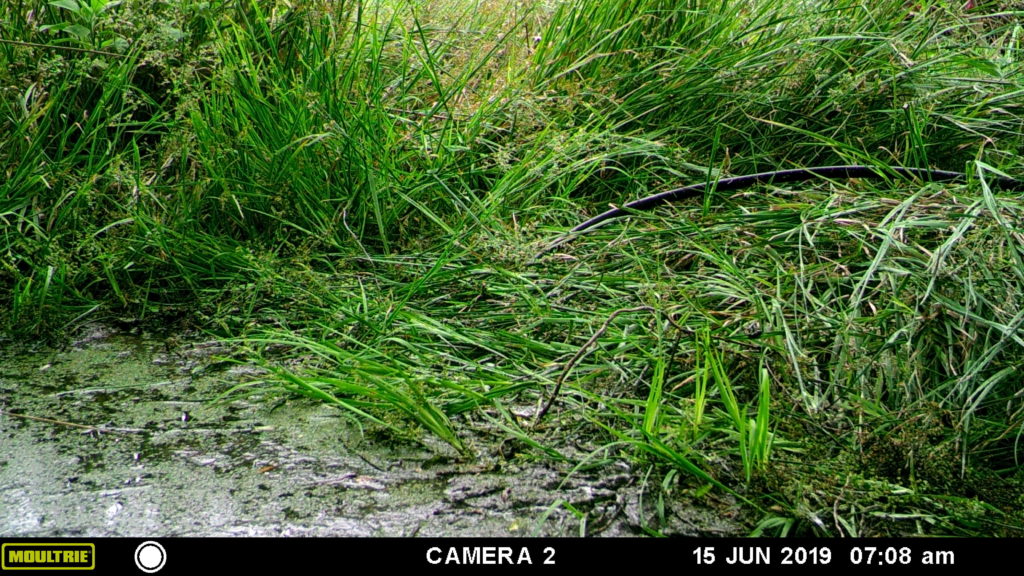

* Yeah. We do good work. * -
Coyotes
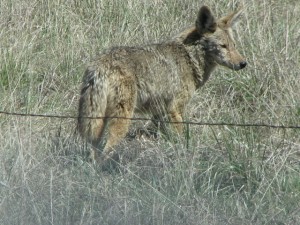
A coyote from some years back. Fall and winter are the times of year when many outdoor pets disappear. I’ve blogged on this before, too. ‘Teenaged’ coyotes, hungry (just like human teens!), bolder and less cautious will come closer to homes and people to grab food. If there is pet food outside the house, coyotes will take it if they can. If you have small pets outside, even chained, they can be killed by coyotes.
This doesn’t make coyotes evil. They are predators, a very necessary part of the food chain. Look up ‘trophic cascade’. That is how preditors in a wild environment cause prey animals to keep moving in natural patterns. Unthreatened, not only can prey animals reproduce to extremes, but also they will linger over feeding areas and eat plants down to the ground rather than trim them and move on.
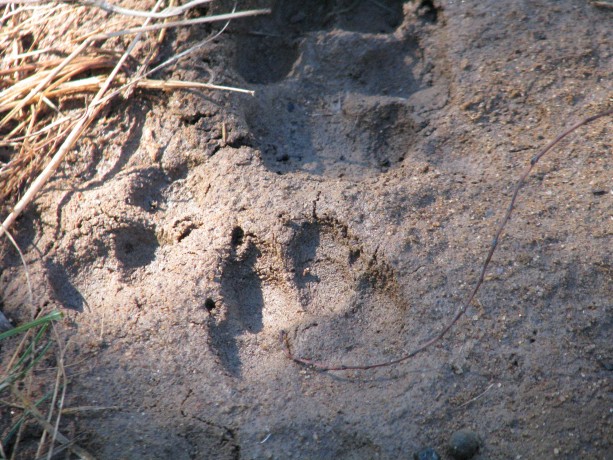
Coyote pawprints by the pond where they stopped for a drink. Dog pawprints have nails; cat (mountain lion!) pawprints don’t because their nails retract. Coyotes are intelligent, loyal, family-oriented, playful animals. They also make very scary sounds when howling and yipping in packs. Coyotes are no threat to humans unless the coyotes are sick, or if a child comes close when a coyote is eating outdoor pet food and is frightened.
Now that our last dog, Sophie, has passed away, coyotes are jumping the five-foot chainlink fence nightly and hunting in our yard. They have been unable to breach the Fowl Fortress (the hens are also locked into their coop within the FF for double protection). Unfortunately on Halloween I let the hens out of the coop about 45 minutes before dark. They had just gone under the Mock Pavilion, and I went into the FF to give Belle some of her special mash when there was a wild clucking. A coyote had come close and grabbed Chickpea our Americauna, and they were gone. My daughter saw it running away, and I dashed after, losing my slippers on the way, and hunted all over the neighbor’s yard but there was no sign of her.
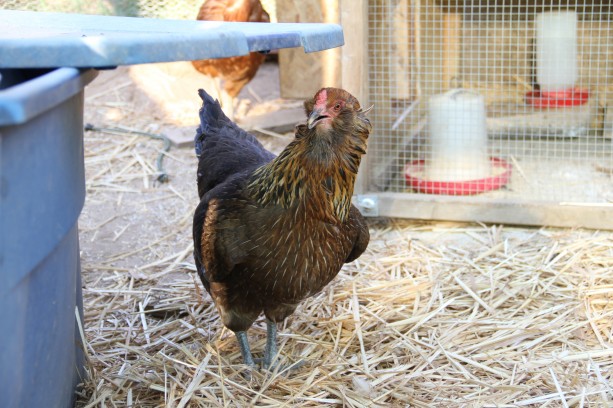
It was tramatizing, and I kick myself because I should have known better, even though I was just yards away and the hens had been released only minutes before. It was a lucky chance for the coyote, who must have already been in the yard but hidden by plants. At least it was a quick death for our darling Chickpea. It hurts us both that she is gone. No more ‘outies’ for the girls, even with a hensitter.
The coyotes leave scat in our yard and we can tell what they’ve been eating.
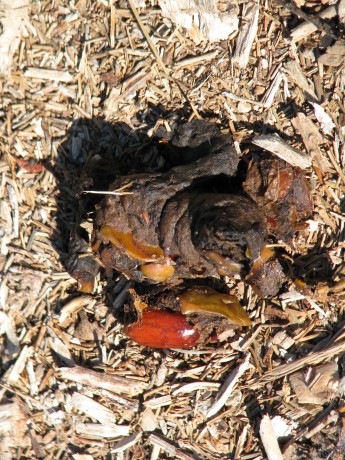
Sorry. Yes, it is coyote scat. Notice the seeds. Tiny seeds show that they were eating figs off of some volunteer fig trees down in the barranca. Larger seeds and skin in the scat shows that they are eating the red Eugenia berries in our yard. There is never much fur in the scat, so these omnivores have to scavenge to stay alive.
On the funny side, one day a few weeks ago I saw some fuzzy green thing in the yard.
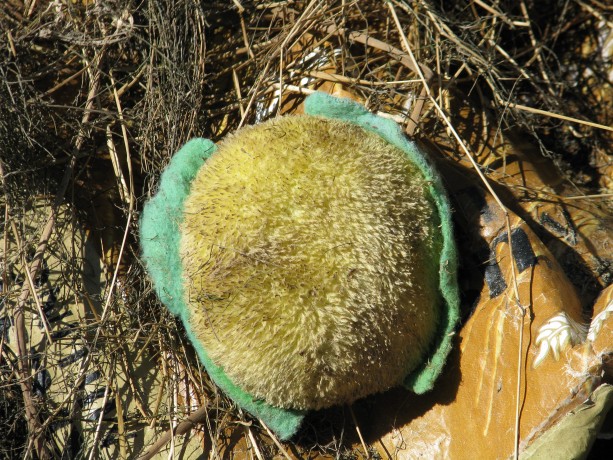
A coyote-delivered squeaky toy. It has since had its squeaker removed, and been slowly shredded by visiting coyotes. It turned out to be what looked like the center of a plush sunflower dog toy. It squeaked. It wasn’t ours. Some young coyote found it in another yard, carried it over the fence and played with it down by our pond. Over the next week it was moved around each night. One morning I found it next to a veggie bed I’d recently planted.
Then I realized that the rubber snake I put down in the bed to discourage birds was gone! My daughter and I looked everywhere for the snake, even for pieces of it, but it was gone! Some neighbor is going to have a real bad moment one of these days when walking through their property and they come across my rubber snake.
-
Keep In Your Pets: It is Predator Season
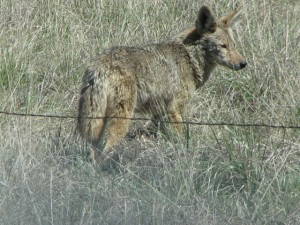
This juvenile coyote was playing with his litter mate at the Santa Rosa Preserve in plain site of the road. Youth just aren’t cautious, no matter what species. Photo by Miranda Kennedy We are entering the time of year when outdoor cats, small dogs, free-range chickens and any small pet go missing. Pre-adult (aka teenage) coyotes from this year’s early litters are just as hungry and just as fearless as human teens, and they are looking to fill growling stomachs during the day and night. (Besides, a study by University of Nebraska found that feral cats are responsible for the extinction of 33 species of birds worldwide. Keep your cats contained!) Can’t blame coyotes because this is their land. Preditors are an important part of our ecosystems and the removal of them have devastating effects on our ecosystems, all the way down to the plants in a process called trophic cascade. During this heat wave I’ve been sleeping with windows open. At about 5:15 am I heard the hens going crazy down in their Fowl Fortress . Throwing on my white robe and slippers I ran down the hill towards the coop. Just before I reached it, a young handsome coyote came around the corner behind the compost bins and we nearly collided. He was across the property and over the chain link fence in a heartbeat. The hens were safe because the Fortress is wired up both sides and across the top, and the wire goes into the dirt. However if the coyote were to have time to dig he could have been inside. The hens were so upset that they didn’t lay right for several days. Miss Amelia, the leader, was on top of the chicken tractor screeching away. Chickpea and even formidably-built Lark were on top of the smaller coop. These three survived the coyote attack that killed two of their friends last winter (pre-Fowl Fortress). The two adopted Rhode Island Reds were standing by the door wondering what all the fuss was about; they’ve seen our two elderly, partially deaf and blind dogs walk past all the time. General Mischief, whose probably only working park is his sniffer, lumbered excitedly around the property following the coyote’s path. At night I began to lock the hens inside the chicken tractor where they roost inside the Fortress, so that they’d have two lines of defense.
The next morning I arose to chicken screeching even earlier, and ran down there to see a coyote coming from around the back of the Fortress. I knew where it would jump the fence so I ran in that direction, which gave it quite a surprise as it had to pass me to get there. I stood at the fenceline brandishing a rake that I had caught up on the way down the hill, dressed in slippers and long white robe, shouting threats into the neighbor’s backyard like a lunitic. One thing about growing older is that eccentric behavior is excused.
I wasn’t about to let the coyotes believe they could hunt within my fence. The next morning I was up and out just after five, me and General, my rake and my white robe, over which I’d pulled a red jacket because the morning was misty. I stood at the fenceline, pulling some ragweed to not waste time. In about five minutes I felt that they were coming and stood waiting. Sure enough, halfway across the neighbor’s property were some bushes and from around behind them trotted a coyote. He looked pretty jaunty and sure of himself until he turned and caught an eyeful of me. I shook my rake and he seemed to shake his head disbelievingly. Then he cut out the way he had come. Victory for me!
I collected dog poo and dumped it along the fenceline, and stuck clumps of fur left from shaving General’s thick coat into the top holes in the fence. I love the country life.
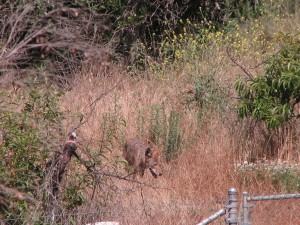
Of course I didn’t bring a camera on my morning patrols. This coyote was in what is now the Bee Garden, several years ago. He looks worse for wear. Photo by Miranda Kennedy. For the next few mornings I’d roll out of bed, motivate Sophie and General to get up and go outside, and I’d patrol the fence and make my presence known at the entry point. Although I was sleep-deprived (with the late darkness I tend to only get dinner at about 9 and to bed by 11) I managed to to get some impressive gardening done, especially since I changed into old clothes before heading out. There was no more coyote activity, at least none that the hens told me about.
The other night the pack was running down in the streambed and were yipping and howling in communication. I think it was just past midnight, but I went out there just to make sure there were no visitors.
Sophie is a 14 year old rescued pit bull mix I’ve had since she was about a year old. I knew that she had run with coyotes as a youngster when her owner let her loose, and I never understood why she hadn’t been attacked. Her back legs don’t work well, and she’s feeling her age. She used to climb the chain link fence and roam the neighborhood. She used to kill cats, chase rabbits, keep the mice and rats out of the garage where they used to sleep. For the last few years it has been all peace and love with Sophie. She not only seems to be afraid of some of the cats in the house, but would walk past the ranging hens without putting any of her thoughts into action. I once went to wake her up when she was still sleeping outside, and a mouse ran out from under her. I’d disturbed its warm cozy sleep.
So this morning I let out the dogs when General woke me up and tried to go back to bed. It never works because when General is done he rakes the metal security door with his nails until I let him in again. Sure enough, in about five minutes he was demanding attention again so I put on my robe and went out to do the hens. I was just past the driveway when I caught sight of Sophie on one of the garden paths close to the house. She had a friend with her. A coyote. Sophie was just turning away from it to walk back to the house and the coyote was looking around at the bushes, hopeful for a rabbit breakfast until it saw me and scooted away. The fur was raised a little on Sophie’s back, but not all the way. I made sure he was clear of the property, and checked the hens who were still double locked in. Then I had a few words with Sophie about the choice of friends she asked over!
